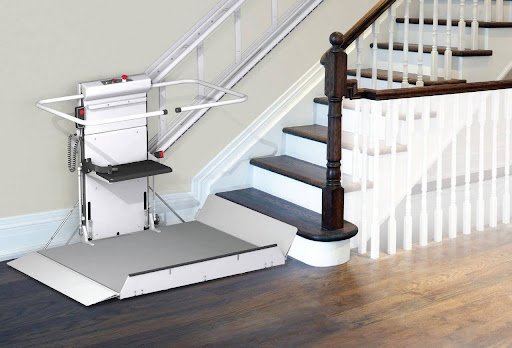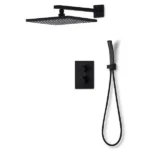Wheelchair lifts, accessible lifts, and commercial lifts are a form of vertical transportation technology and have become an important part of the modern building landscape in the modern age of inclusiveness and universal design. Not only do they provide compliance with regulatory requirements but also make accessible access to people of all mobility states in a dignified and equitable manner. With well-incorporated mechanisms and clever designs, building owners, facility managers, and architects can turn spaces into an easy vertical business where people can move more freely across the floors. The article demonstrates a multipronged advantage and implication of wheelchair lift, accessible lifts and commercial lifts, and the ways it has enhanced inclusive communities.
1. Understanding the role of wheelchair lifts in mobility enhancement
Wheelchair lifts are a type of vertical transport with the specific purpose of transporting people in wheelchairs to a higher level or between floors. Wheelchair lifts are generally space-saving as compared to regular lifts and may be mounted either inside or outside, which makes wheelchair lifts versatile and can be used in both retrofitting and existing facilities. Facilities may address such architectural barriers, staircases, or raised entries by the incorporation of a wheelchair lift, giving the user direct and independent access without the potential requirement of a manual assistant. This autonomy not only improves self-confidence and independence but also makes caregivers less physically exhausted as they would potentially have to carry or briefly navigate wheelchairs up and down the stairs.
2. Design considerations of wheelchair lifts
The design of accessible lift fits most mobility tools in accommodation, including power chairs, power wheelchairs, manual wheelchairs, and scooters and adheres to high standards of safety and ease of access. On platforms, key features should be sufficient platform size, guardrail heights, smooth operation controls, and emergency stop functions. In addition, available lifts should be dimensionally compliant to allow clearance of turning and positioning. Considered location within building plan, clear path-of-travel routes, and a user-friendly control panel with tactile and Braille labels also add usability. When appropriately put together, the available lift provides a dependable and intelligible interface that can effortlessly be used by anyone.
3. Regulatory system of commercial lifts
Commercial lifts are a wider range of vertical transportation products designed to be used regularly in the confines of both commercial places and personal establishments, like offices, shopping centres, hotels, and hospitals. Such lifts should comply with national and international standards, i.e. laws, such as the Americans with Disabilities Act (ADA) in America or the Equality Act in the United Kingdom, which sets up accessibility regulations. Regular inspection, load testing and maintenance schedules are also part of the regulations of mental building to maintain safety. Not only does compliance reduce legal liability risks to the owners of property, but it also drives a social regulatory effort to ensure that commercial establishments do not exploit the design element by failing to adopt an inclusive design approach to all commercial activities.
4. Advances in technology increasing accessibility
Inclusive design potential has been recently boosted by new technological developments regarding lift techniques. The modern wheelchair lifts are commonly designed to use quiet, smooth hydraulic or screw-driven technology and economy-efficient motors and regenerative drives minimize the operational expense. Smart controls that offer remote monitoring and diagnostics allow preventive maintenance, thus reducing downtimes. Commercial lifts have become more accommodating to touchless controls or voice activation systems to suit individuals with low hand dexterity or poor vision. Also, modular and prefabricated lift systems mean that installation schedules can be accelerated further, so an old building is more likely to install an accessible lift without the need to make substantial structural changes.
5. Integration of wheelchair lifts into existing architectures
Retrofitting older and non-accessible buildings is one of the most critical issues when it comes to accessibility upgrades, as those buildings were not initially customized to accommodate mobility-impaired users. Wheelchair lift systems provide a flexible solution to these situations, usually with low to no structural modification of a full-height elevator shaft. Platform lifts are attached to walls or built into stairwells, allowing directional differences, whereas vertical inclined lifts follow the direction of a staircase. Designers can easily integrate a wheelchair lift by closely viewing the load-bearing requirements, floor orientations, and clearance considerations without interfering with the architecture or smashing the foundation. This flexibility allows a broad variety of facilities to take advantage of improved access without the excessive upgrading expenses.
6. Maintenance and safety protocols for accessible and commercial lifts
Safety checks and routine maintenance are imperative in ensuring the dependability of the available and commercial elevators. Procedures used in the maintenance usually involve regular lubrication of the moving objects, review of safety interlocks, confirmation of limit switches, and testing of emergency lowering systems. Technicians should also check the wiring, safety sensors, and control panels for wear or damage. By setting your maintenance routine program that is required by your manufacturers and by the law of the land, costly failures and safety risks can be prevented. Moreover, involving building staff in training on the routine checks of operation and important measures to be taken in case of downtimes of the lift will make them efficient in responding in case of any malfunction during use, thus protecting their users.
7. Cost-benefit analysis of the installation of accessible lifts
Although a cost-benefit examination of an initial capital investment in wheelchair lifts and accessible lifts can seem high, a long-term cost-benefit analysis might prove to show very convincing returns. Increased accessibility will boost the foot traffic within retail businesses and widen the potential customer base as well as revenue. Having a commercial lift in the hospitality, medical, and retail businesses ensures that the patrons are valued, which makes them loyal and gains a positive image. In addition, accessibility legal regulations minimize fines and legal challenges. Accessibility can often be funded in the form of grants, subsidies and tax credits, which further defray initial costs. When considered on a lifespan basis of the equipment, which can easily extend to more than twenty years, the savings in operating cost and community goodwill very often more than compensate for the capital outlay.
8. Probable projections of universal vertical mobility
Moving forward, the future development of available technologies in the field of lifts forecasts additional improvements to user comfort and sustainability. Artificial intelligence-based predictive maintenance is under research that can be utilized to optimize service schedules, and advances in materials science that may potentially lead to lighter parts that are more durable. Such sustainability efforts can be reinforced by the installation of energy-recovery lift systems or solar-powered lifts that cause minimal environmental impact. The principles of universal design will remain the key to regulatory regimes that will further expand the boundaries of accessibility features. Since smart buildings are expanding on Internet of Things (IoT) platforms, accessible lifts can be included in an end-to-end ecosystem, in which they communicate with the security, light and HVAC systems to result in responsive, adaptive environments that are proactive in meeting and adapting to the needs of individuals.
Conclusion
The implementation of wheelchair lifts, accessible lifts, and commercial lifts in constructed spaces is a critical step in the direction of genuinely inclusive design. These vertical transportation solutions not only represent the legal requirement but also represent a stand of dignity, independence, and equity for people with different mobility levels. By carefully selecting, integrating, maintaining, and innovating, architects and facility managers can achieve this goal of enabling everyone to experience easy and safe movement across floors. With universal access being an ongoing cause championed by society, the utility of these lifts is only set to increase in prominence, creating accessible spaces that accommodate everyone without exception.
Related Reads
- Custom Fitness App Development: Build the Fitness App Your Users Actually Want
- The Power of a Solar Energy Inverter for a Brighter Tomorrow
- Daily Wear Earrings Online: Everyday Elegance by MINA Jaipur
- GE LM2500+G4 Gas Turbine – Powering the Future of Energy in 2025
- A Polished Approach to Everyday Smile Care in Keighley
- Is Smooth Allo 35000 Puffs Worth Buying? Full Breakdown



